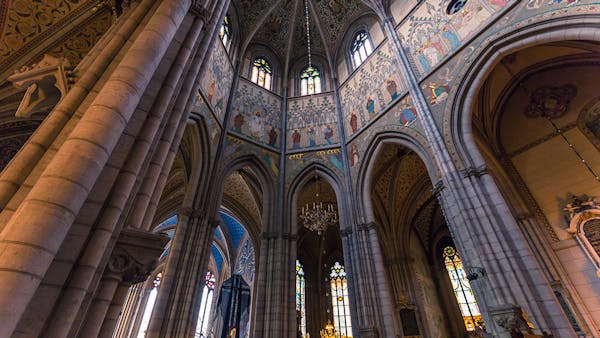In order to lull the Huguenots into a false sense of security and also to lure many of the nobility to Paris; Charles IX proposed the marriage of his sister, the staunchly Catholic, Margaret of Valois to the young king Henry of Navarre who was staunchly Protestant. After some wheeling and dealing the marriage was arranged and secured and soon a procession of Huguenot nobility flowed freely into Paris with the King to celebrate the marriage.
The massacre was planned for after the wedding. The king had ordered all the gates of Paris, save two, to be shut and many Huguenots sensing that something was afoot fled the city before the Massacre took place but many remained inside. The king had given instructions to arm a large portion of the people and had ordered the spread of rumors to incite the mob to butchery. At 2 am on the 24th of August 1572, the signal, the tolling of the bell at the Palace of Justice was given, authorized by the Queen Mother. A single shot was heard, followed by a cacophony of sound and fury from which was heard the cry, “Kill, Kill”. Every single Huguenot in the city was mercilessly butchered by their Catholic neighbors, who, to keep themselves distinct, wore white armbands.
In order to lull the Huguenots into a false sense of security and also to lure many of the nobility to Paris; Charles IX proposed the marriage of his sister, the staunchly Catholic, Margaret of Valois to the young king Henry of Navarre who was staunchly Protestant. After some wheeling and dealing the marriage was arranged and secured and soon a procession of Huguenot nobility flowed freely into Paris with the King to celebrate the marriage.
The massacre was planned for after the wedding. The king had ordered all the gates of Paris, save two, to be shut and many Huguenots sensing that something was afoot fled the city before the Massacre took place but many remained inside. The king had given instructions to arm a large portion of the people and had ordered the spread of rumors to incite the mob to butchery. At 2 am on the 24th of August 1572, the signal, the tolling of the bell at the Palace of Justice was given, authorized by the Queen Mother. A single shot was heard, followed by a cacophony of sound and fury from which was heard the cry, “Kill, Kill”. Every single Huguenot in the city was mercilessly butchered by their Catholic neighbors, who, to keep themselves distinct, wore white armbands.
Huguenot nobility who had been housed at the Louvre were dragged out of their beds, hacked to pieces and their body parts piled in front of the Louvre. The massacre continued for seven days and extended beyond Paris throughout France and blood flowed freely throughout the streets of France. Those who managed to escape the butchery found refuge in Geneva.
The religious wars of France would continue from 1572-1598 until the Edict of Nantes was signed awarding the Huguenots substantial religious, political and military autonomy. However, this was revoked in 1685 and over the next twenty years, hundreds of thousands of Huguenots fled France to take up residence in the Protestant states of the Holy Roman Empire and elsewhere throughout the world.

